Not everyone’s bathroom habits are the same, but it is good to know if you are constipated as it could lead to piles or haemorrhoids. Constipation is defined as having fewer than three bowel movements per week.1
Common symptoms if you are constipated:1

Your stools are dry and hard

Your bowel movement is painful and stools are difficult to pass

You have a feeling that you have not fully emptied your bowel
The link between constipation and haemorrhoids
- If you are constipated, the food you eat moves slowly through your digestive tract, which gives the colon more time to absorb water from the digested food (waste).1
- This causes the stool to become dry and hard.1
- The hard and dry stool as well as the straining during bowel movements increase the risk of haemorrhoids.1
More information about Haemorrhoids
Haemorrhoids also known as piles, are swollen veins in your anus and lower rectum.2,3
Haemorrhoids can be felt outside the anus (external) or can be hidden from view inside the rectum.
(internal)2,3

Types of Haemorrhoids and the associate symptoms
External haemorrhoids
Symptoms of external haemorrhoids are irritation or itching in the anal region as well as pain and discomfort. You may also experience swelling around the anus and bleeding.3
Thrombosed haemorrhoids
Symptoms of thrombosed haemorrhoids are severe pain, swelling, inflammation and a hard lump near your anus.3
Internal haemorrhoids
Symptoms of internal haemorrhoids are caused by irritation or straining when passing stool. You may experience painless bleeding during bowel movements or notice a small amount of blood on the toilet paper.3
Haemorrhoids are common, occurring in both men and women. Although haemorrhoids do not usually cause serious health problems, they can be annoying and uncomfortable. Fortunately, there are treatments that can help ease the discomfort.2
What to do if you have haemorrhoids
Remember the longer food stays in your bowel the more water is absorbed from waste (stool/poop), this can lead to constipation and in the end might cause haemorrhoids.1
Exercise can reduce constipation by stimulating a sluggish bowel and moving food through the intestines a bit faster.4
Exercising also increases your heart rate and breathing, which can help move stools out even faster.4,5
Keep a regular exercise routine without exacerbating your haemorrhoid symptoms.
Physical activities you can do at home

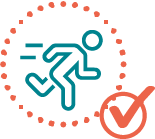

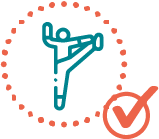
exercises.6k
It is important to listen to your body, if it is too painful or feeling uncomfortable speak to your healthcare professional.
Activities to Avoid if you have Haemorrhoids
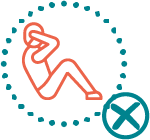
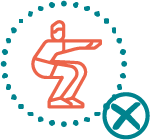
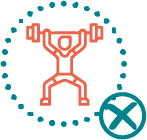

Exercises that put pressure on your abdominals, anal area, or haemorrhoids are best to avoid.7
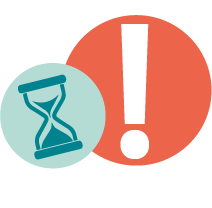
Don’t exercise after eating a meal, wait for at least an hour.
After eating, blood flow increases to your stomach and intestines. Exercising straight after eating forces the blood flow away from the stomach and to your heart and muscles instead. The strength of your gut muscle depends on the blood flow and if it is low, your intestine’s contractions are weak and the food will move slowly through the intestine.5
Once thing leads to another such as constipation and haemorrhoids but exercise can help.
It can be difficult to get active when experiencing that uncomfortable feeling but speak to your healthcare professional to find out which activity is best for your body.
References: 1. Cleveland Clinic. Constipation. [Update 11 July 2019; Cited on 22 July 2022]. Available from: https://my.clevelandclinic.org/health/diseases/4059-constipation. 2. Bleday R, Lamont JT, Chen W. Patient education: Hemorhoids (Beyond the basics). [updated 18 February 2021; Cited 22 July 2022]. Available from: https://www.uptodate.com/contents/hemorrhoids-beyond-the-basics/print. 3. Mayo Clinic. Hemorrhoids. [Update 12 May 2021; Cited 22 July 2022]. Available from: https://www.mayoclinic.org/diseases-conditions/hemorrhoids/symptoms-causes/syc-20360268#:~:text=Hemorrhoids%20(HEM%2Duh%2Droids,hemorrhoids%20from%20time%20to%20time. 4. Beth Israel Deacones Medical Center. Constipation and the Pelvic Floor Muscles. 2016. [Cited 22 July 2022]. Available from: https://www.bidmc.org/-/media/files/beth-israel-org/centers-and-departments/rehabilitation-services/all_about_constipation_booklet_2016_05_rev.pdf. 5. Bruce DF. Exercise to Ease Constipation. [Updated 17 June 2020; Cited 22 July 2022]. Available from: https://www.webmd.com/digestive-disorders/exercise-curing-constipation-via-movement#:~:text=Exercise. 6. Ali ZH, El-Sayed NO, Taha NM. Effect of Conservative Measures in Improving Hemorrhoid Stages and Relieving Symptoms among Patients with Hemorrhoid. Journal of American Science 2011;7(9):1-53-65.. 7. Healthline. 6 Exercises to Treat (and Prevent)Hemorrhoids. [14 October 2020; Cited 25 July 2022]. Available from: https://www.healthline.com/health/exercises-for-hemorrhoids#takeaway.


